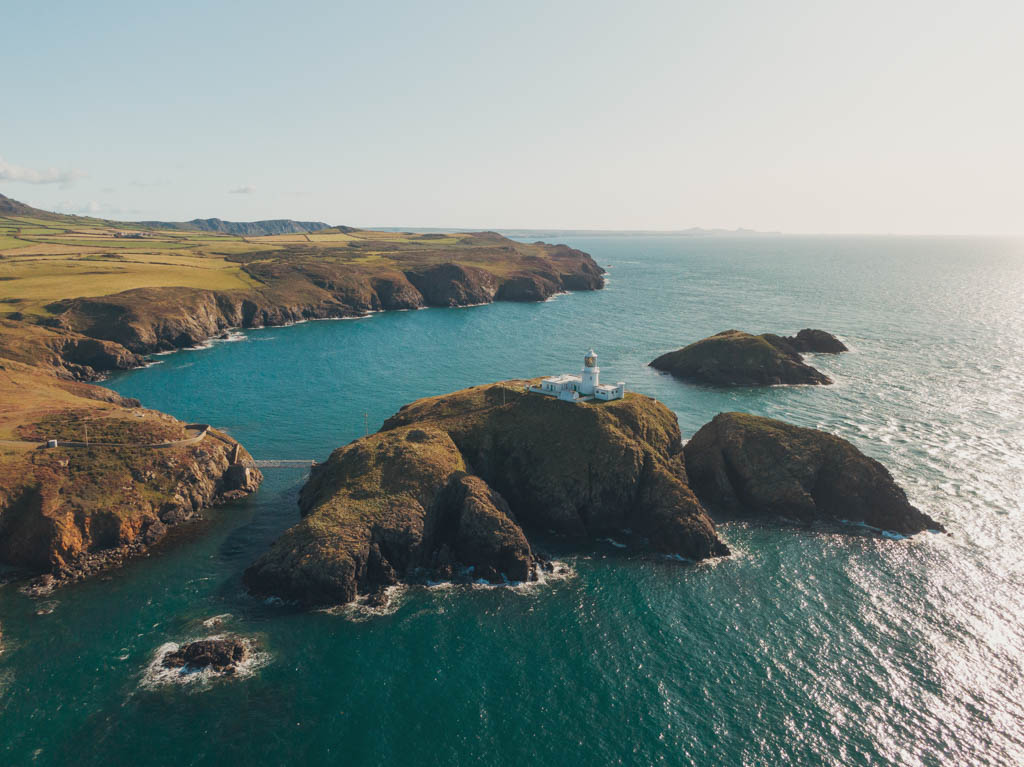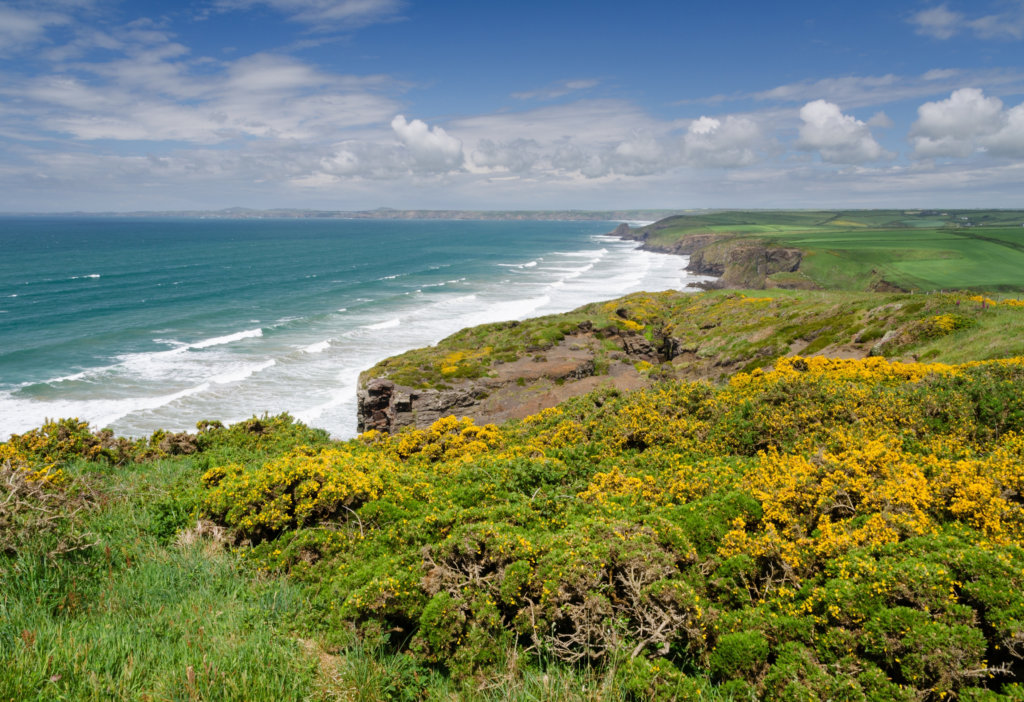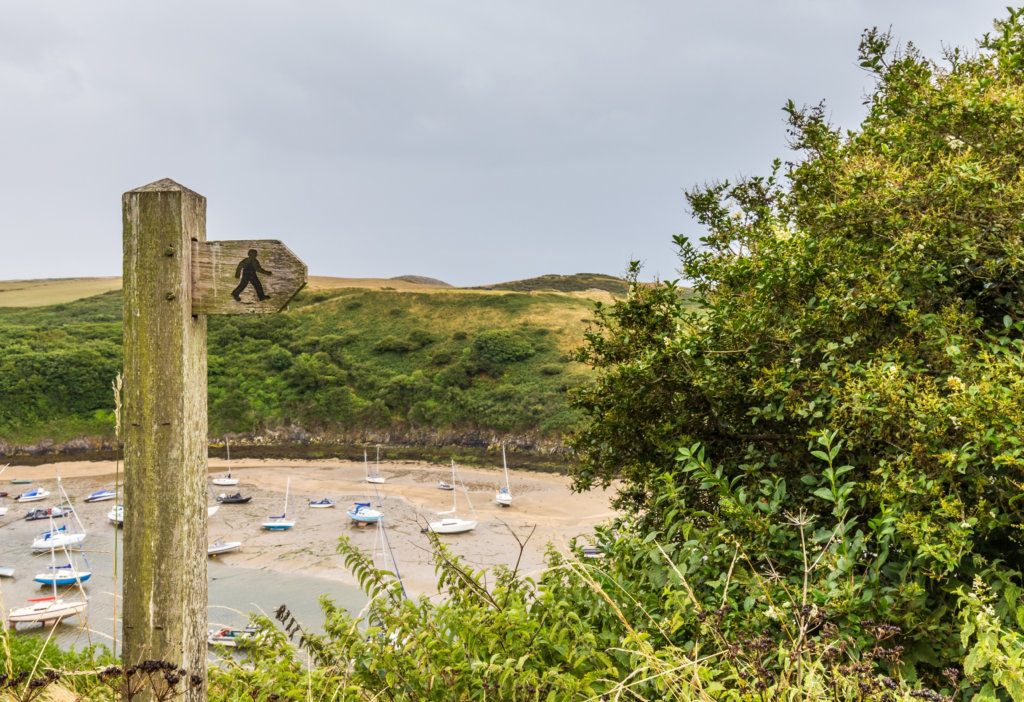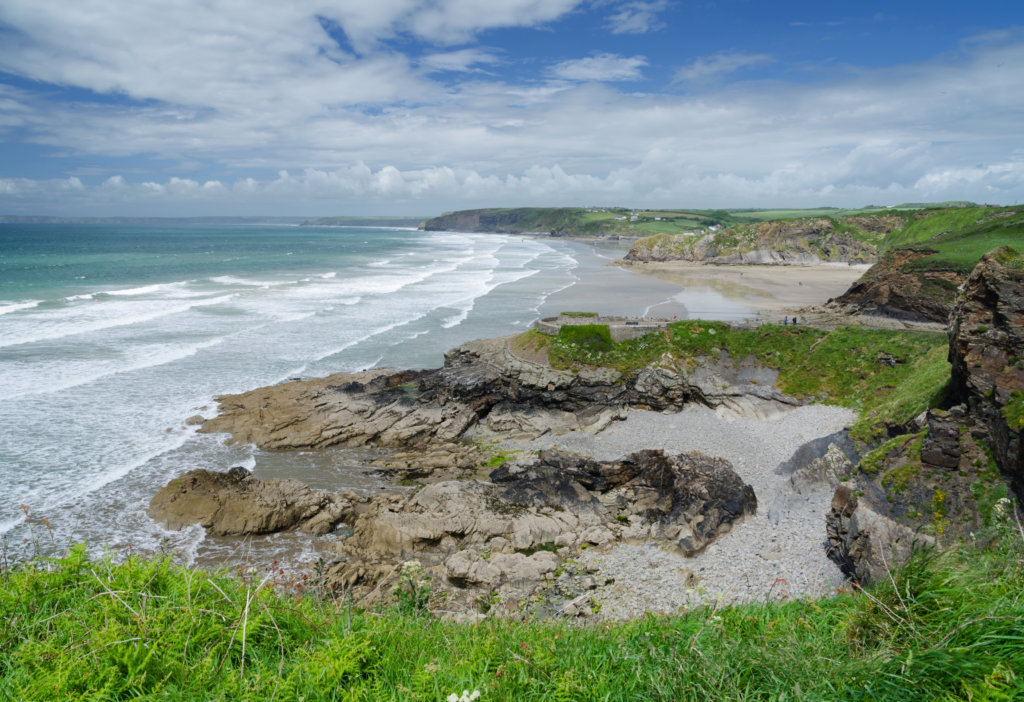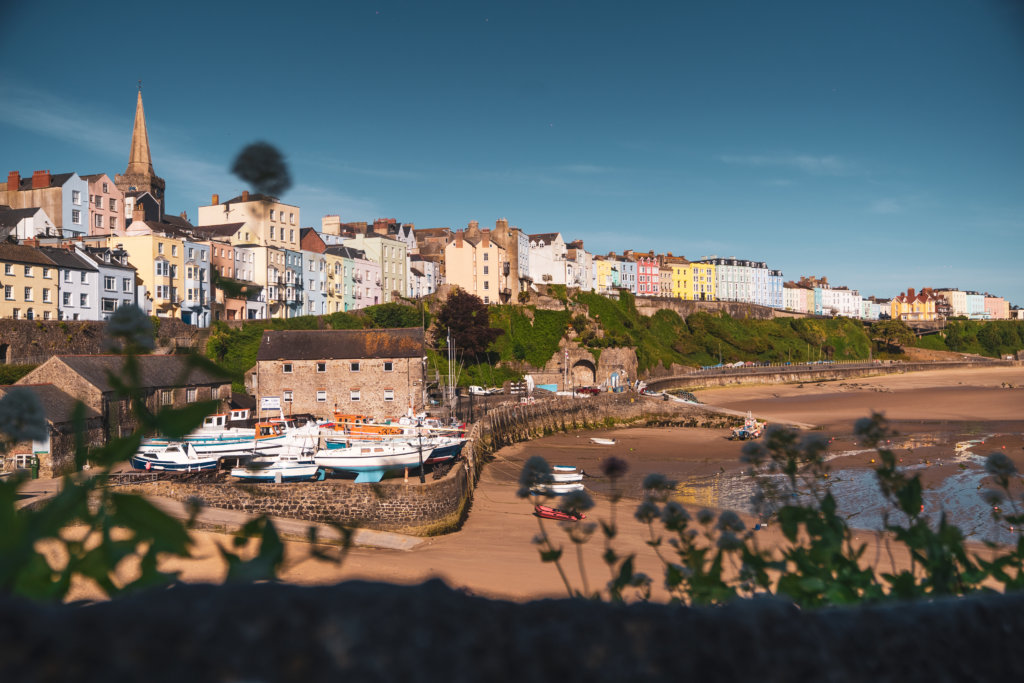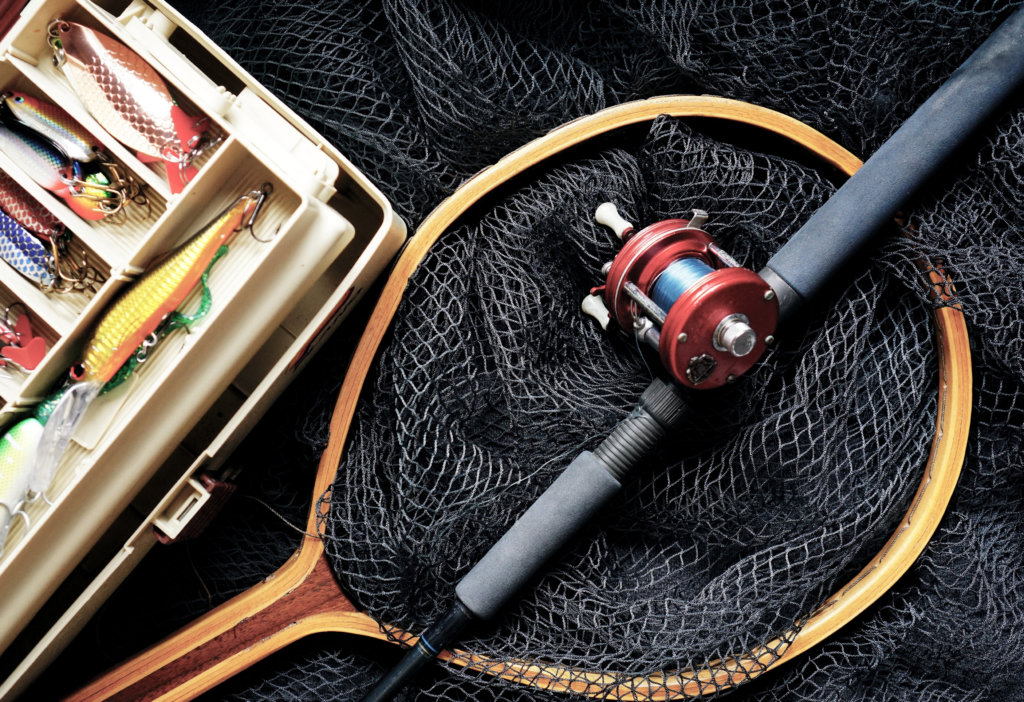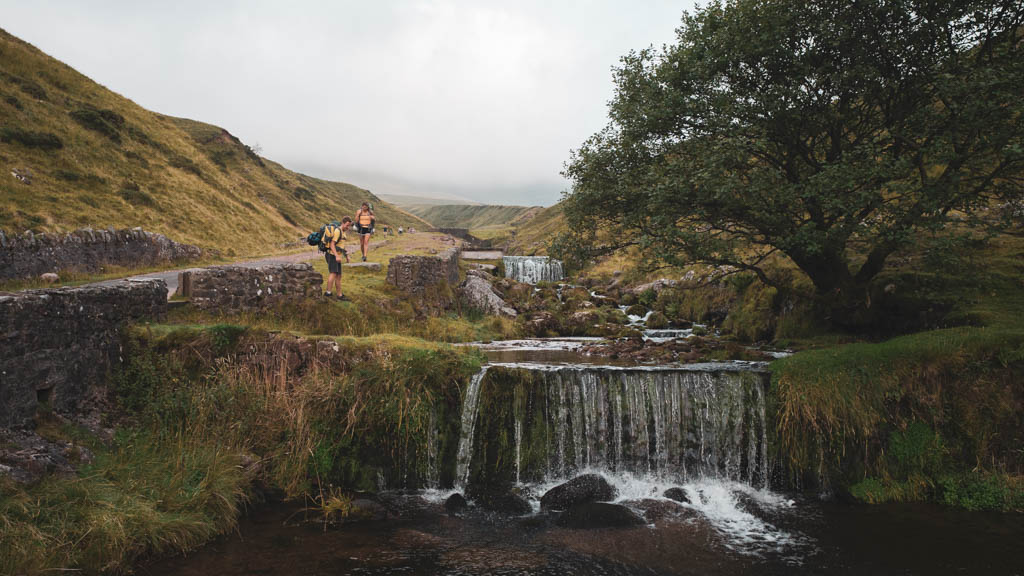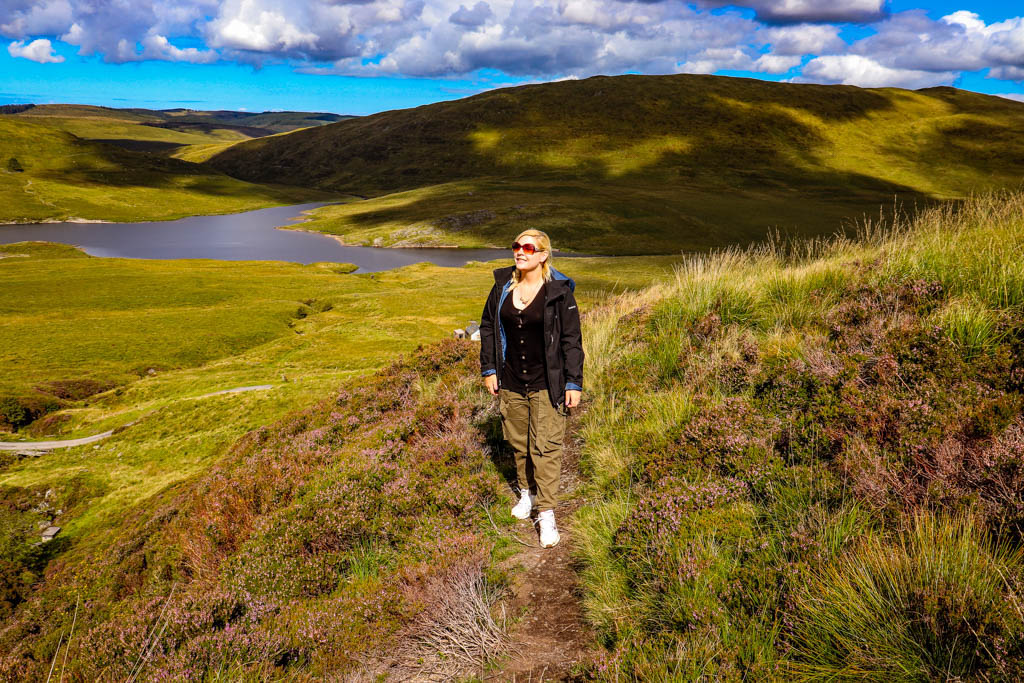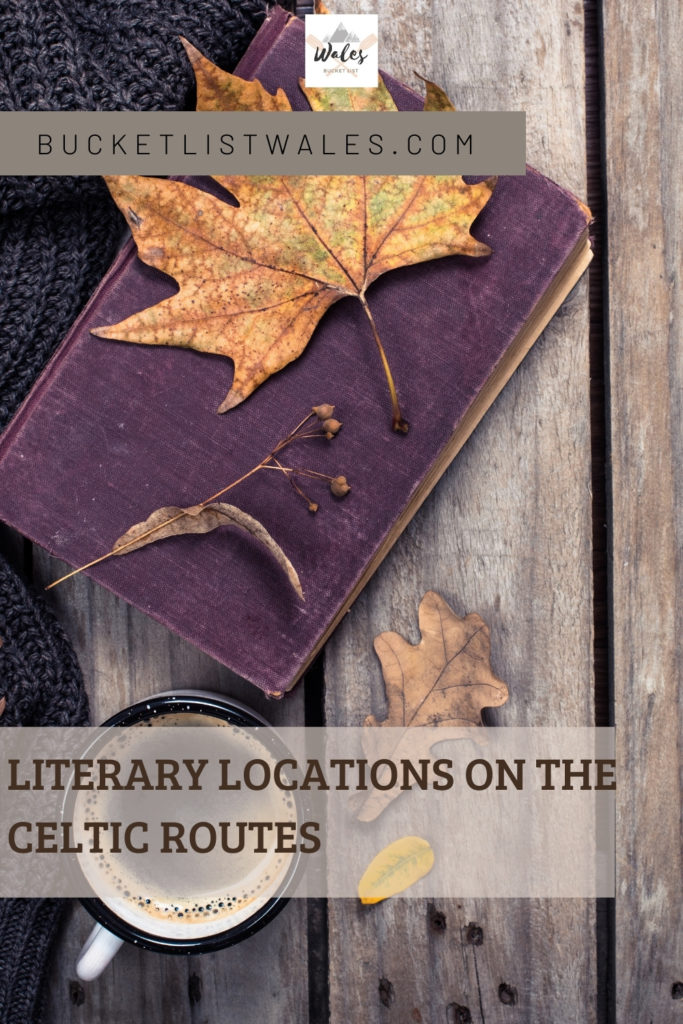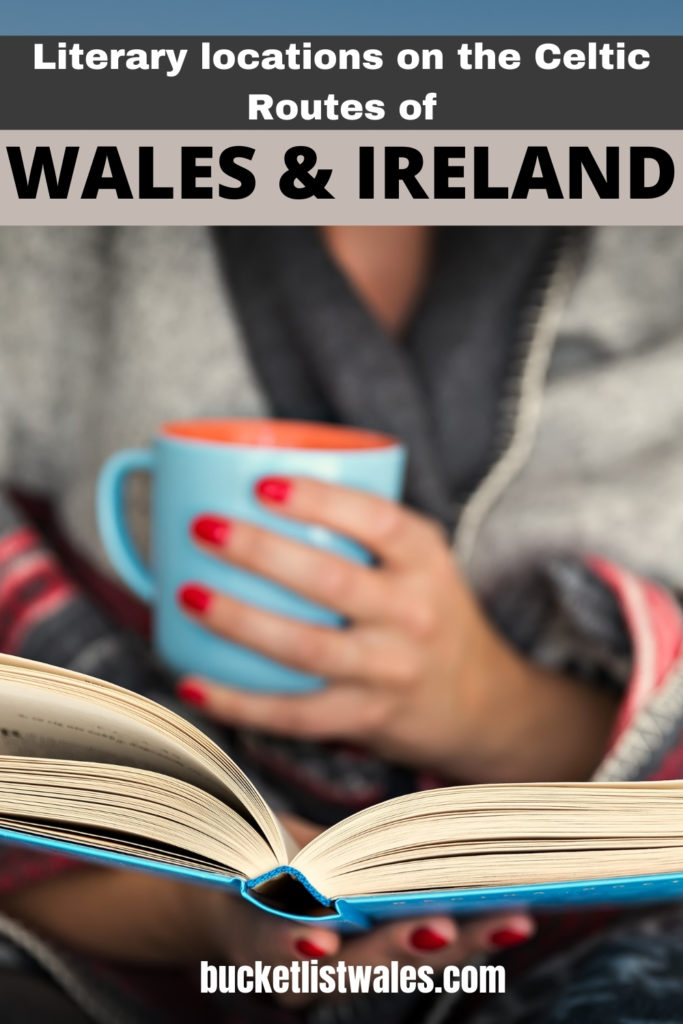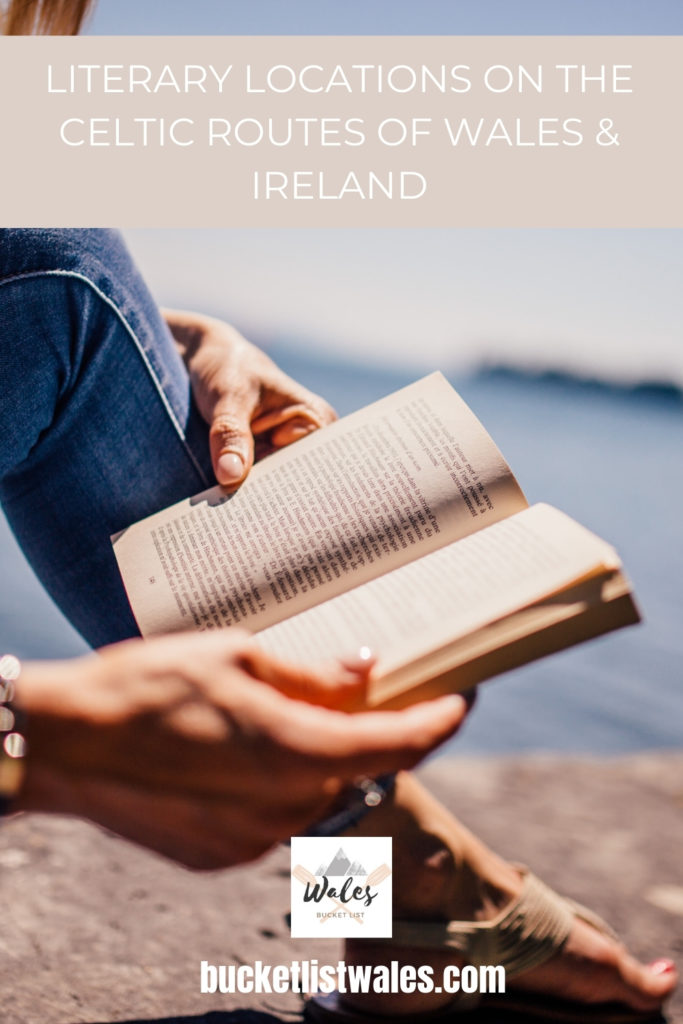There are some wonderful literary locations on the Celtic Routes of Wales and Ireland.
Experience the beauty of the Celtic Routes through the eyes of some very special authors and poets.
Discover new destinations through iconic books and poems and get ready for some serious travel inspiration.
Literary locations on the Celtic Routes
Get lost in the colourful images evoked by the stories from these celebrated writers.
You can visit a range of literary locations in the Celtic route counties of Pembrokeshire, Ceredigion and Carmarthenshire in Wales. Then hope on over to Wicklow, Waterford and Wexford in Ireland.
Make yourself a coffee and take a trip via these wistful words from the comfort of your own home.

Dylan Thomas Boathouse Carmarthenshire
It’s almost impossible to mention the town of Laugharne without mentioning ‘Dylan Thomas’ (1914-53), in the next breath.
This iconic Welsh poet and writer is synonymous with Laugharne. He lived here, loved here and drank in many of its pubs. He is even buried in the graveyard of St Martin’s Church.
Thomas was born and raised in Swansea, a gorgeous seaside city. His dazzlingly inventive use of language made him one of the most important poets of the 20th century.
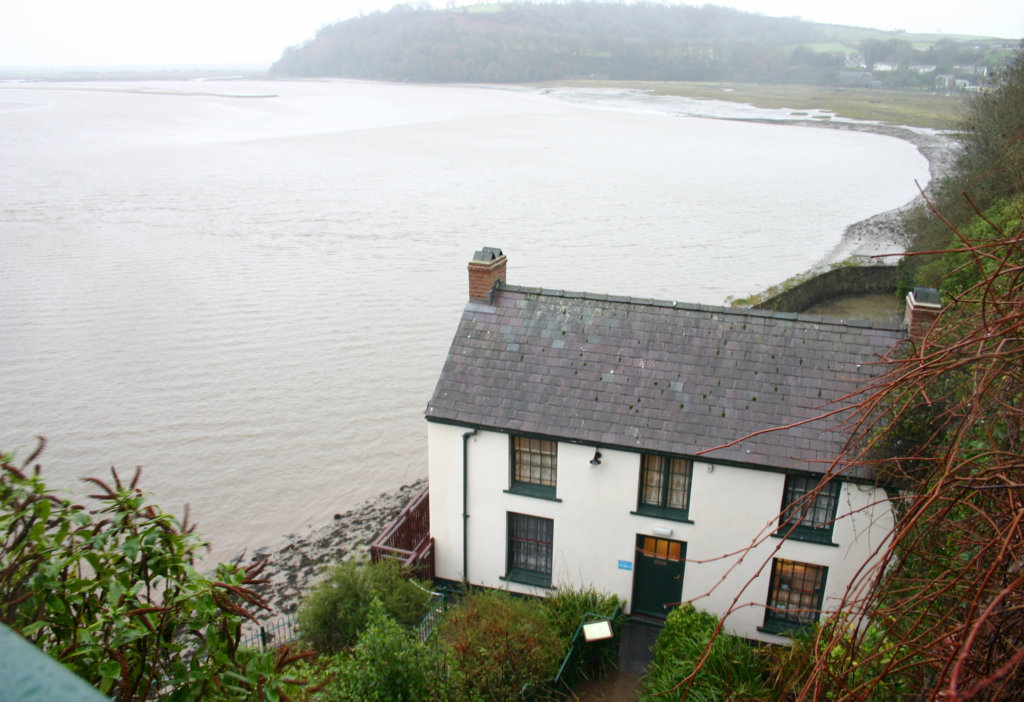
Dylan Thomas residence
Thomas’ most celebrated works include the play ‘Under Milk Wood’ and poems ‘Do Not Go Gentle Into That Good Night’ and ‘Fern Hill’.
The Boathouse is where Dylan lived with his wife and family in the last years of his life.
On the path to it lies the writing shed overlooking the Taf Estuary. Here, Thomas wrote his famous radio drama, ‘Under Milk Wood’.
It’s been left just as though he had popped out for some sea air and has yet to return. As if he had, against his own advice, wandered gently into that good night. It’s one of the most beautiful literary locations on the Celtic Routes.
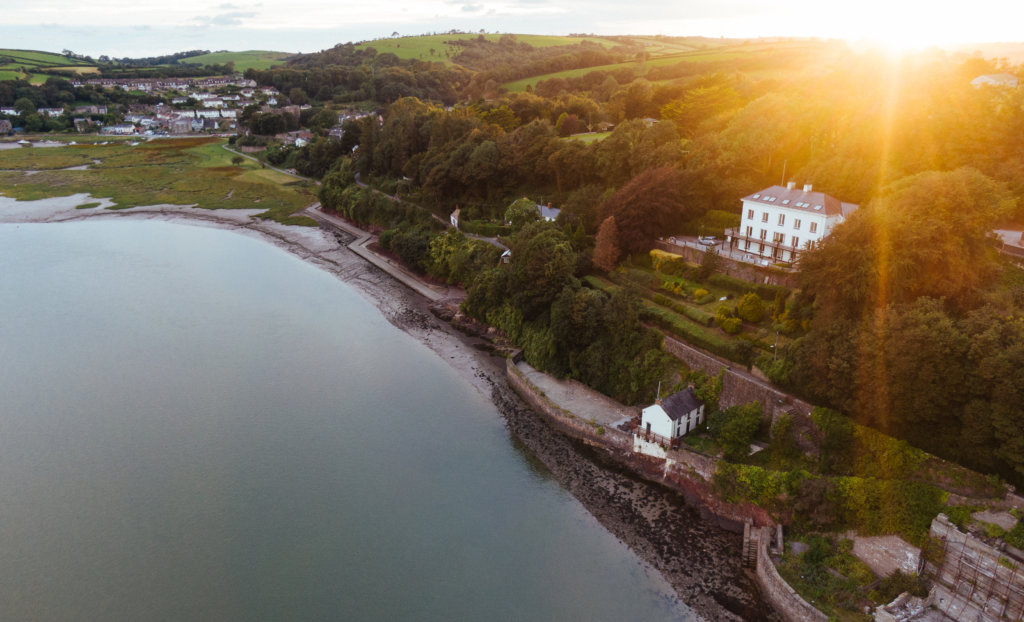
Roald Dahl Pembrokeshire Coast Path
The Pembrokeshire Coast Path twists and turns for 186 miles from St Dogmaels in the north to Amroth in the south.
It covers almost every kind of coastal landscape, from volcanic rock headlands, limestone arches, blowholes and sea stacks, to narrow glacial inlets.
Lines of red and grey sandstone cliffs are broken by sandy beaches. The Path reveals an abundance of coastal flowers and birdlife, as well as evidence of human activity from Neolithic times to the present.
It’s easy to see why the Pembrokeshire Coast Path is a popular place for visitors of all kinds, including one of Britain’s most-loved writers, Roald Dahl.
My Year, Roald Dahl
Every Easter, Roald’s family used to visit a house they later bought called The Cabin, in Tenby, which remains in the family’s possession today.
‘My Year’, published in 1991, is based on a diary Dahl wrote during the final year of his life, in which he fondly remembers Easter holidays in Tenby.
Relive Roald Dahl’s footsteps through his most treasured memories of Tenby and the Pembrokeshire Coast Path in this special final publication.
R.S Thomas Strata Florida Abbey, Ceredigion
Welsh poet and Anglican priest, R.S. Thomas (1913-2000), focused his work around the natural landscape and the people of Wales.
One of his most famous poems, ‘Welsh Landscape’, is said to be inspired by the landscape of Ceredigion, from the mountains and reserves to the churches.
Get lost in Thomas’ poems and be transported to the Strata Florida Abbey, in the Cambrian Mountains.
The abbey of Strata Florida, Latin for ‘Vale of Flowers’, or ‘Ystrad Fflur’, as the locals call it, has stood in monastic tranquillity on the banks of the River Teifi since 1201.
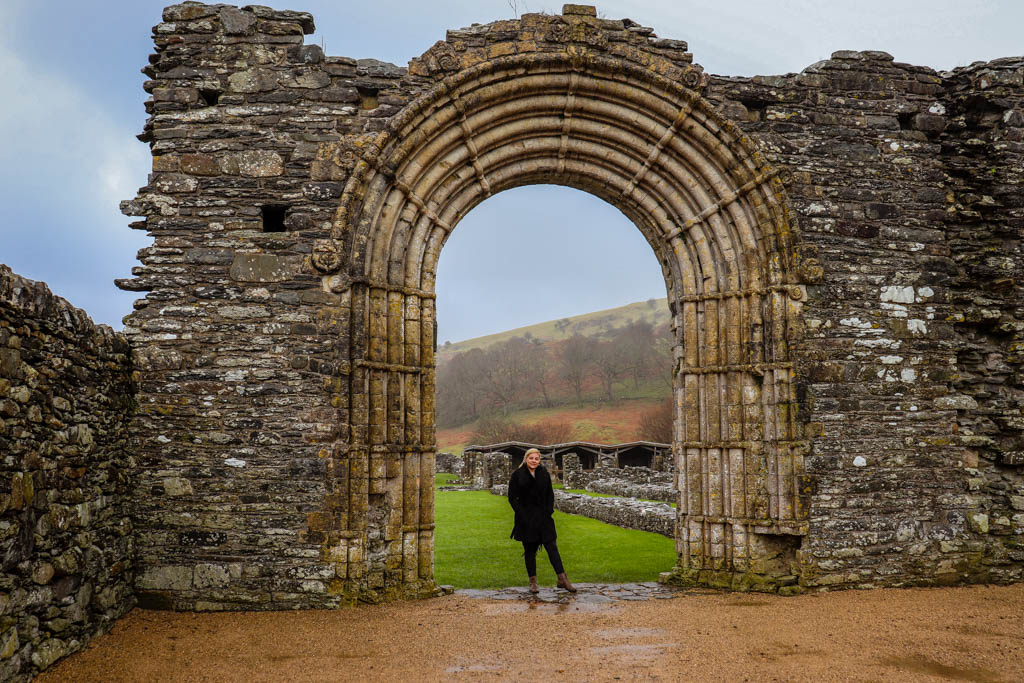
Famous Welsh Church
Established by Cistercian monks, it soon became the most famous church in Wales after St Davids and a keystone of Welsh Culture.
The ruins give clues as to the former wealth of the abbey, like the Romanesque carved doorway that once would have connected the nave to the high altar.
It’s also the resting place of the 11 princes of Dinefwr and the poet Dafydd ap Gwilym.
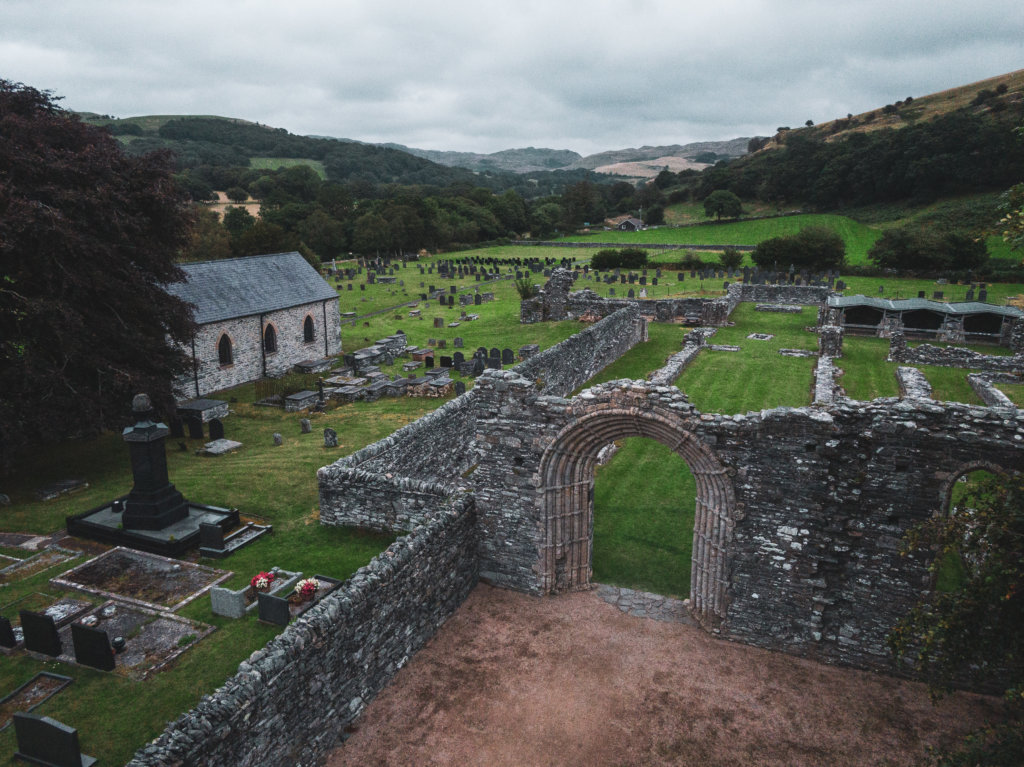
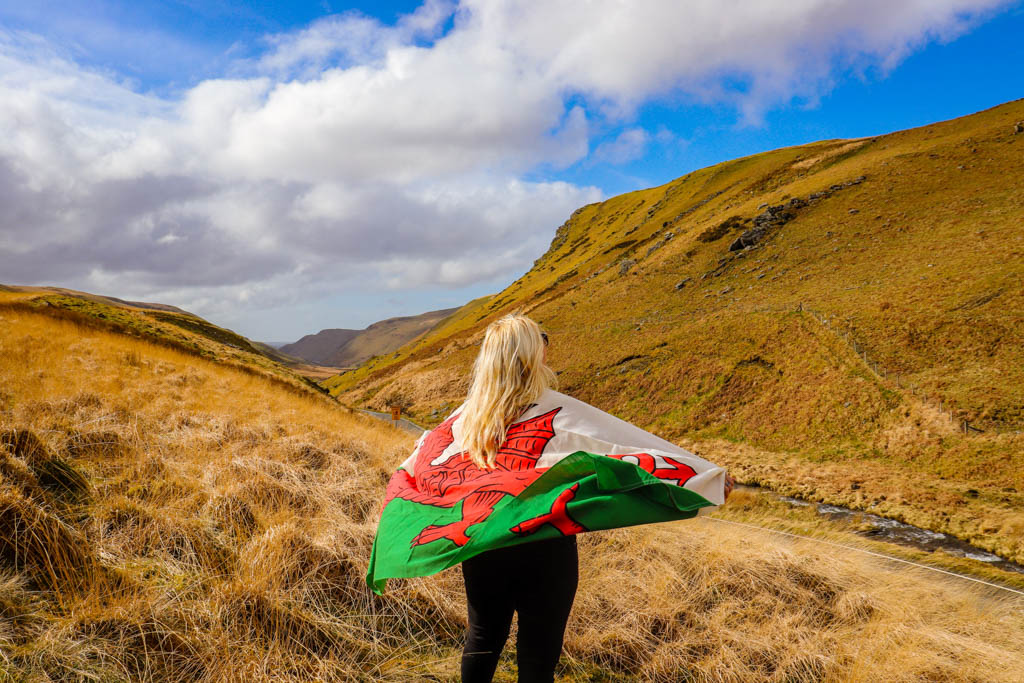
Caroline Clark Teifi Pools, Ceredigion
The source of the River Teifi, one of the longest rivers in Wales, is found in the north of Ceredigion.
Tranquil Llyn Teifi and the other Teifi Pools – Llyn Hir, Llyn Gorlan and Llyn Egnant – lie hidden in the hills, on the remote Monks’ Trod from Strata Florida Abbey.
This enchanting group of deep, glacial lakes are the perfect place to shrug off the bustle of daily life.
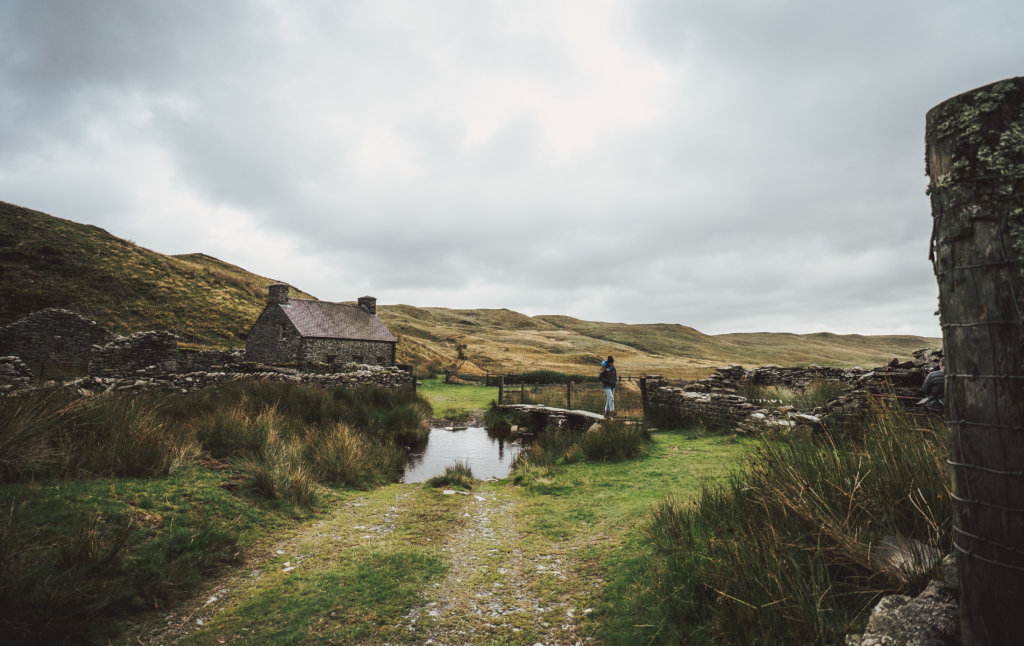
Welsh poet Caroline Clark
It’s not difficult to understand why this beauty spot is the inspiration for Welsh poet, Caroline Clark.
Out at the Bright Edge, a collection of poems affectionately known as the ‘lovesongs to the landscape” of north Ceredigion, are inspired by history, stories and life of the area between the rivers Dyfi and Teifi.

Colm Tóibín Enniscorthy Castle, Wexford
Colm Tóibín was born in Enniscorthy, Country Wexford. Known for his poetic prose, Tóibín uses his home county to evoke a strong sense of local place.
Dubbed the “Wexford” novels, they are ‘The Heather Blazing’, ‘The Blackwater Lightship’, ‘Nora Webster’ and most notably, ‘Brooklyn’.
Through these novels, get a picture of Enniscorthy Castle, iconic and steeped in a turbulent history.
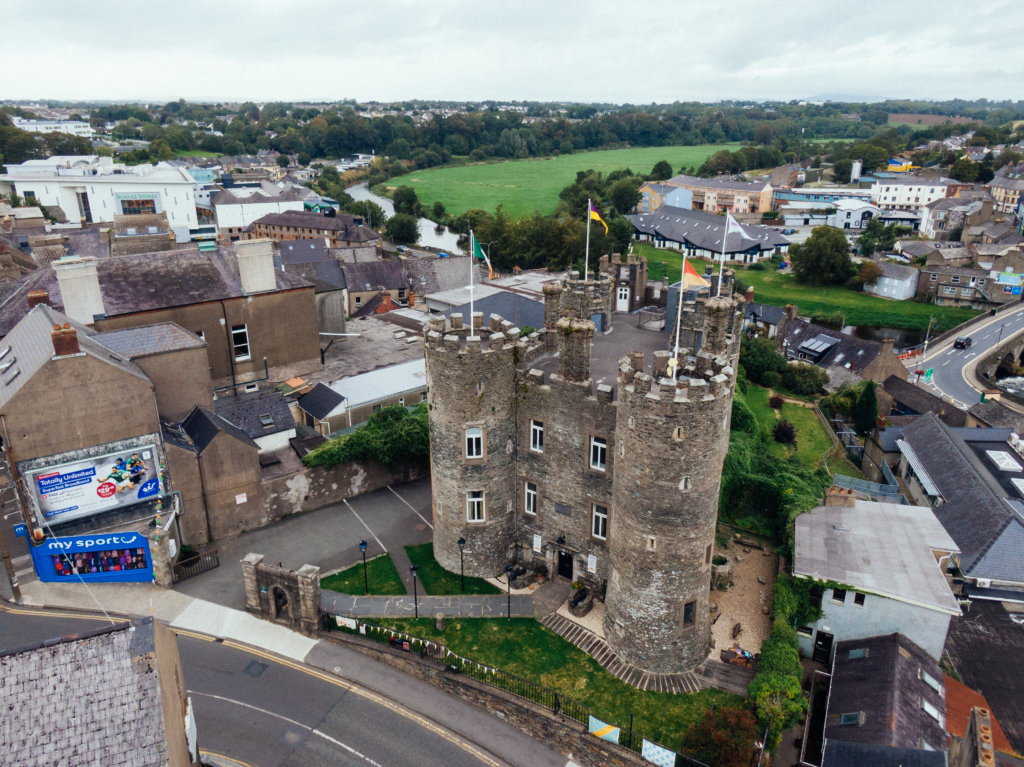
Enniscorthy Castle history
The castle was originally built in 1190 by the Norman de Prendergast family, who lived there relatively peacefully for around 200 years.
After this, the issue of who owned the castle became very contentious and was often settled with violence.
It was claimed by the Irish in 1375 and retaken by the English in 1536. Then it was burned down by the Irish in 1569 and gifted by Queen Elizabeth in 1589.
The castle was then besieged by Orwellian forces in 1649 and then used as a prison during the 1798 Rising. Today, it’s home to the Wexford County Museum.

Cecelia Ahern Lough Tay, Wicklow
Irish born Cecelia Ahern is the author of the worldwide best-selling novel and now film adaption, ‘PS, I Love You’.
Inspired by and features many locations in Wicklow including Blessington Lakes, Lacken, and the Wicklow Mountains.
Delve into Ahern’s beautifully crafted and moving love story, as you follow the lead character’s steps as she travels through her late husband’s home county of Wicklow.
One of those locations, Lough Tay is unsurprisingly one of the most iconic – and most photographed – locations in Ireland.
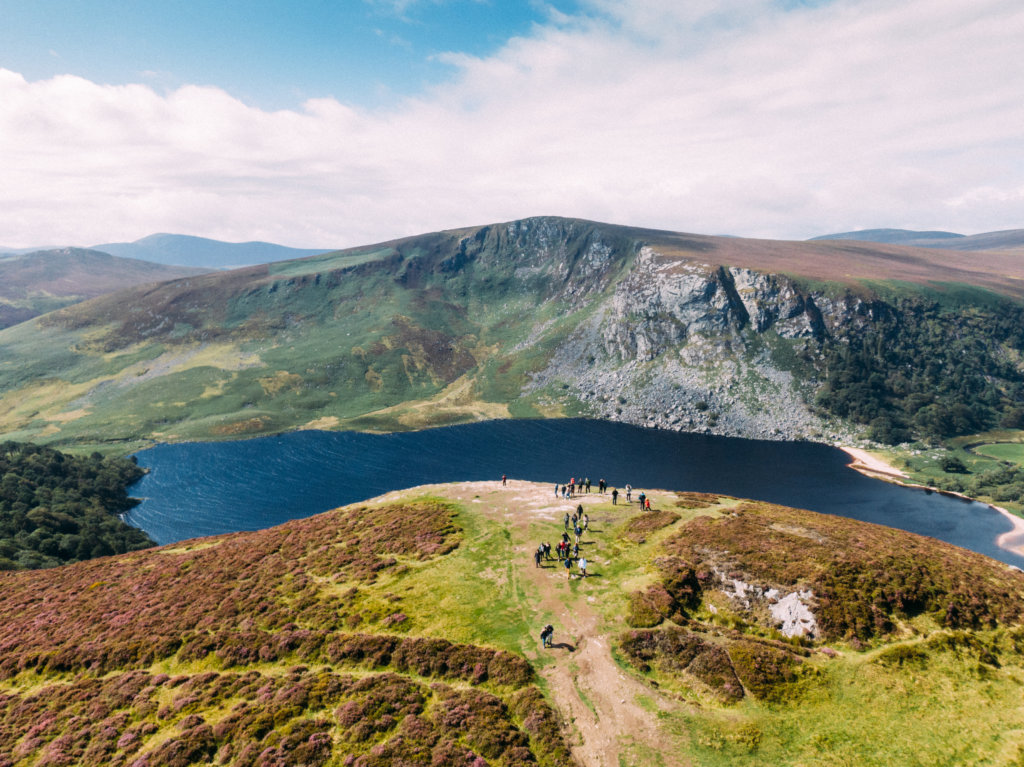
Guinness Lake
In the heart of the Wicklow Mountains, in the bottom of a spectacular glacial valley, is a lake that curiously resembles Ireland’s greatest export.
Its dark, peaty water, combined with an oval shape and white-sand beach make Lough Tay look rather like a giant pint of Guinness.
The lake is part of the Luggala estate, owned for many years by – you’ve guessed it – the Guinness family.
They had the white sand imported to give the lake its distinctive look. So Lough Tay is also known as the ‘Guinness Lake’.
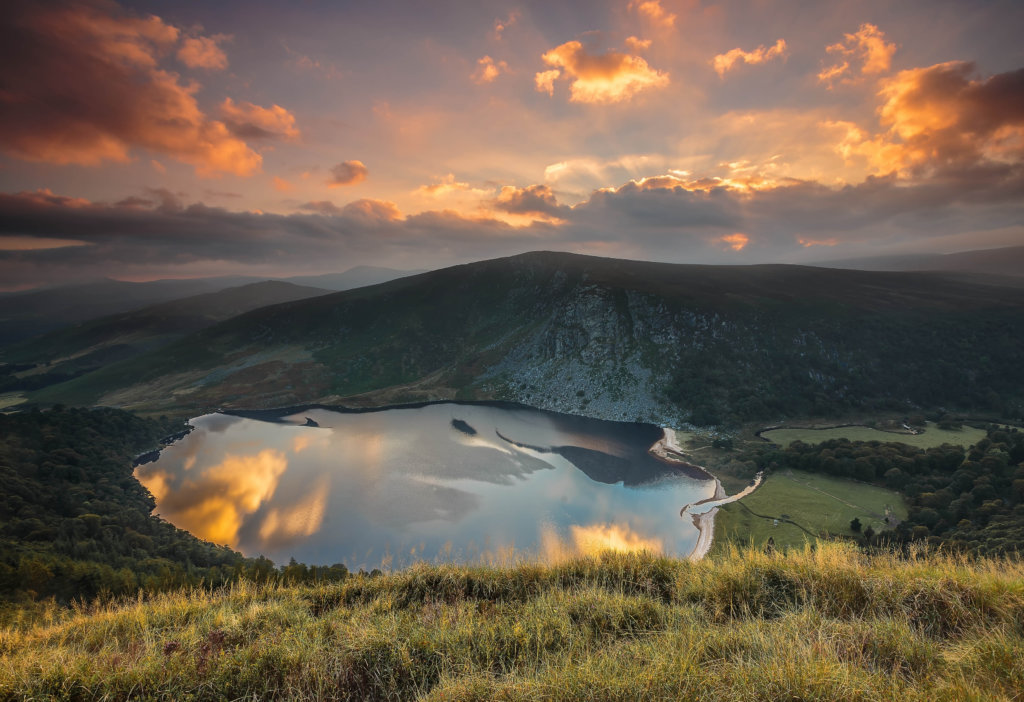
Brendan Behan, Blessington Lakes, Wicklow
In the foothills of the Wicklow Mountains, Blessington Lakes is a 5,000-acre reservoir.
It was formed over 70 years ago by the building of the Poulaphouca Dam and hydroelectric power station.
As well as being the main source of drinking water for Dublin, it’s a popular base for water-based activities like fishing, boating and kayaking.
You can walk or cycle the 6.5km Blessington Greenway along the lakeshore and into natural woodland.
Or drive the 26km route around the valley where the Kings River once met the Liffey. Novelist and poet Brendan Behan described his trip to the area as a ‘journey to the jewel of Wicklow’, in the Irish press in October 1952.
So why not take a trip through the wistful words of one of Ireland’s greatest writers of all time?
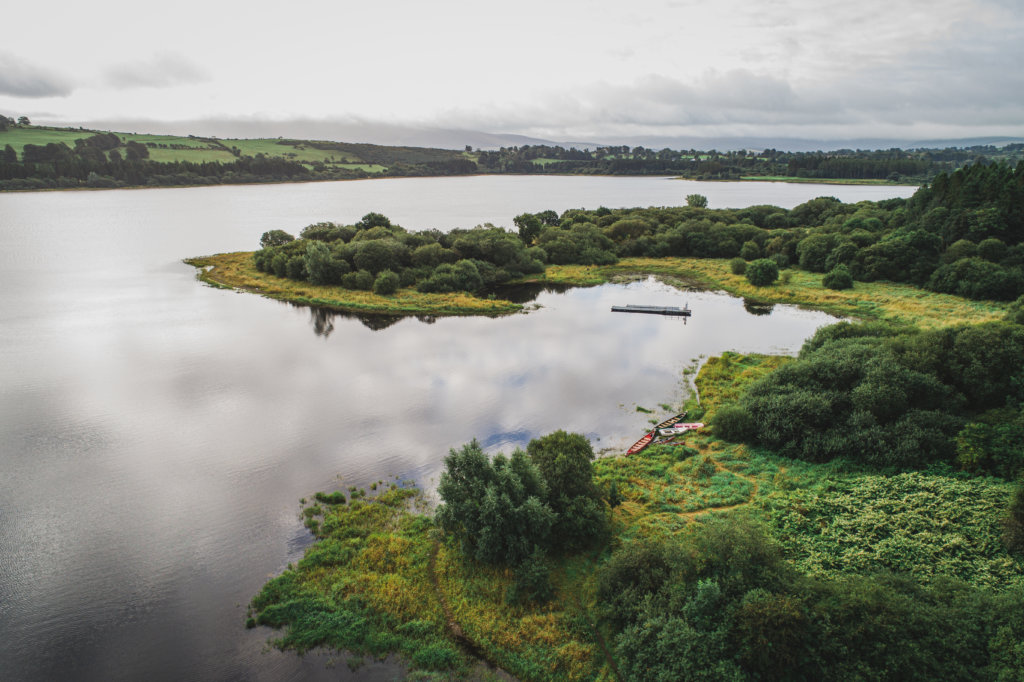
Seán Dunne Waterford Viking Triangle, Waterford
Seán Dunne, born in Waterford, is a celebrated Irish poet. So celebrated in fact, that the Waterford Literary Festival used to be named after him.
His collection of poems, “In My Father’s House” is a memoir of what life was like growing up in Waterford.
Also notable are “Time and The Island”, “The Sheltered Nest” and “Against The Storm”.
Through his poems, gain a strong sense of local place, and learn about the history of life in Waterford city, the home of County Waterford’s rich culture and heritage.

Waterford history
While there’s no doubt that they were drawn to Ireland to raid the rich monasteries, the Vikings were a lot more than just rampaging warriors.
As time went on, they settled, forged alliances and established trading routes and became an important part of Ireland’s story.
A large fleet of invaders landed in what we now call Waterford City in 914. The Waterford Viking Triangle, part of the city’s cultural and heritage area, sits in the original footprint of the settlement.
It’s said that there’s ‘1,000 years of history within 1,000 paces’ here. There’s a trio of museums showcasing the city’s Viking, Medieval and Georgian history. It’s one of the most cultural literary locations on the Celtic Routes.
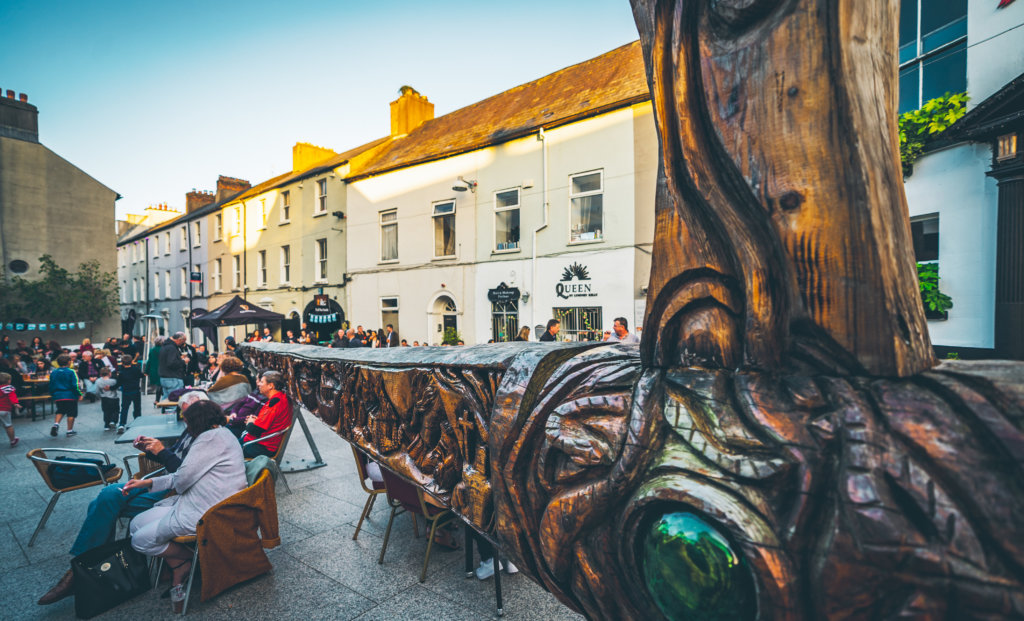
What are the Celtic Routes?
Celtic Routes borne out of partnership between six Irish and Welsh counties encouraging visitors to ‘go deeper, stay longer’.
A cross-Irish Sea set of collaborative counties in Ireland and Wales has formed a partnership to deliver a new tourism heritage project known as the ‘Celtic Routes’.
This partnership aims to bring Celtic culture, spirit and soul to a new audience.
The relationship between the two Celtic nations has been established on the basis of an unbreakable bond formed through their shared heritage of untamed landscapes, ancient crosses, chapel ruins and sacred stones.

Shared Celtic history
Irish migrants who settled in Wales in the 5th century left their mark through the Ogham stones that still line the Welsh coastline today. And in return, Wales gave St Patrick to Ireland – or so they say.
The Celtic Routes aim to showcase this primal relationship to new eyes and ears.
Visitors can discover untamed nature and roads less travelled, that still follow the pulse of the changing seasons and rhythms of the natural world.
And where legends of saints, giants and princes will transport visitors to whole new worlds.
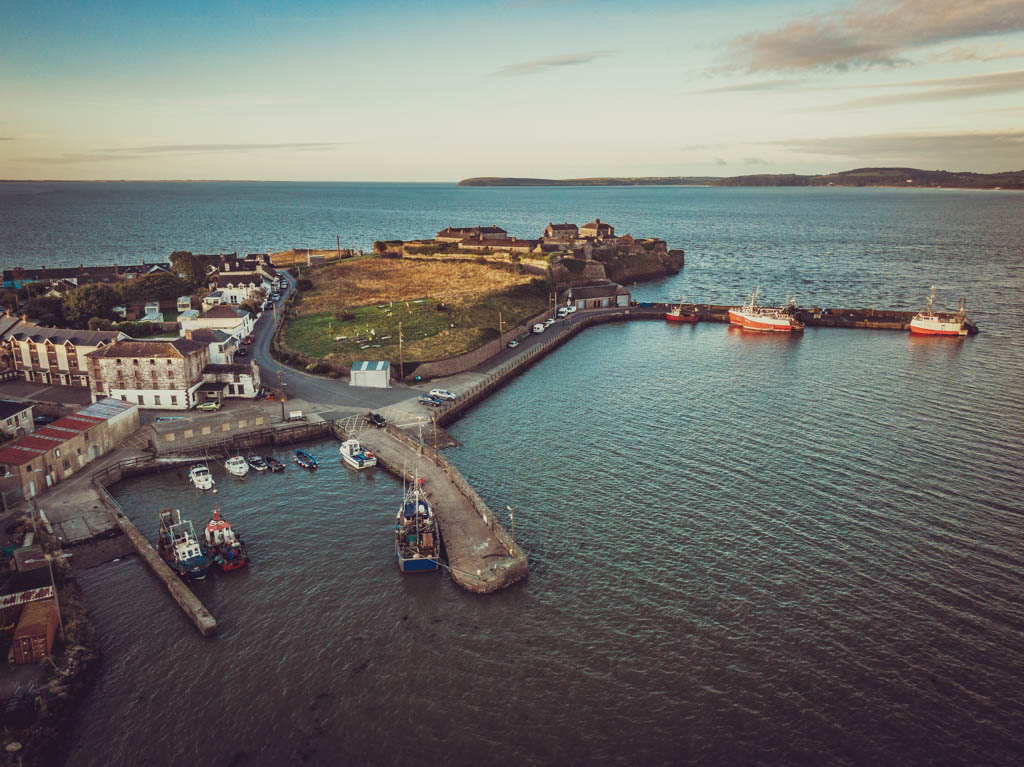

How do I get to the Celtic Routes?
Road – Your Celtic Routes adventure is accessible by car, driving along the coast of Carmarthenshire, Pembrokeshire and Ceredigion before crossing to Ireland.
Sea – After exploring Wales’ Celtic Routes offering, you can catch a ferry from Fishguard in Wales to Rosslare in Ireland. And vice versa.
Air – Fly direct from Cardiff, Bristol or London airports to Dublin from which you can hire a car and drive south to Wicklow, Wexford and Waterford.
Thanks to Celtic Routes for partnering with me for this content. To start planning your trip across the Celtic Routes, go to celticroutes.info for more information and inspiration.
Be sure to also follow Celtic Routes on Facebook, Twitter and Instagram.
What do you think of our collection literary locations on the Celtic Routes? Are you planning any scenic walks this fall? Let us know in the comments below.

Celtic Routes Travel Planning
- Join our Wales Travel Planning Facebook Group
- Book an Airbnb and have £25 towards your first booking
- Search for hotel deals on Booking.com
- Get recommendations from TripAdvisor


